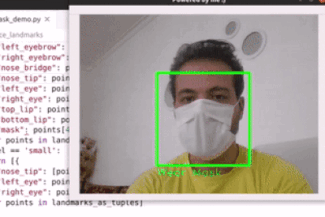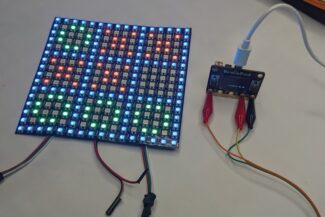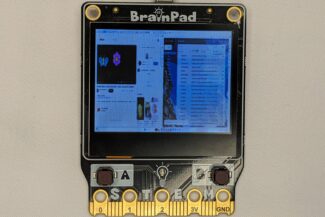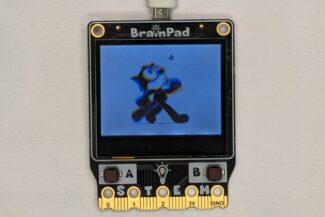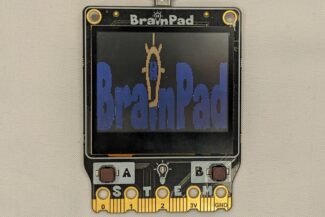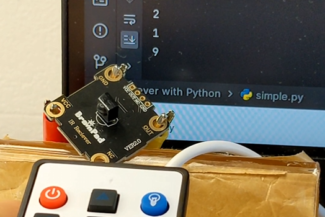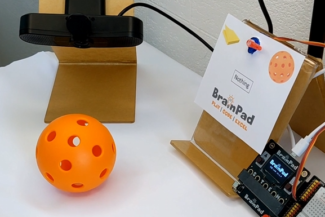This lesson details the modules included in the BrainSense Kit. This lesson covers individual modules generically. The Physical computing lessons cover the language use of those modules.
Prerequisite
You must understand how to connect the modules with I/O Expansion Board Shield as detailed in BrainSense Intro.
This page is made only to explain the modules.
Code examples are left out for the individual language pages.
RGB LEDs
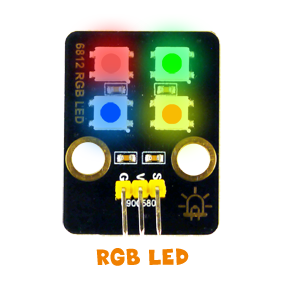
The RGB Module includes 4 RGB LEDs. These LEDs internally contain three LEDs: Red, Green, and Blue. These colors can be used to create any color by changing each color’s intensity. For example, full blue and full red will make purple.
Working with modules that have more than 1 RGB LED is similar to working with NeoPixel, so our RGB LED module houses four LEDs and requires the use of the NeoPixel API for programming accuracy.
Steam sensor
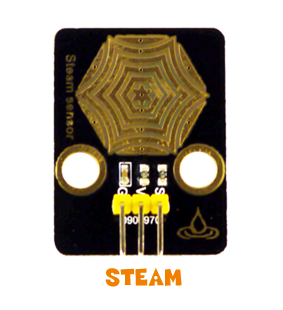
Steam sensor is a device designed to detect and measure steam in various industrial applications. Utilizing advanced technology, these sensors monitor steam levels, enabling precise control of processes like power generation, heating, and manufacturing reducing energy consumption, and enhancing overall performance in diverse industrial settings.
The steam sensor output value is an analog signal, making necessary the utilization of the Analog API for programming, as an analog input device.
Moisture sensor
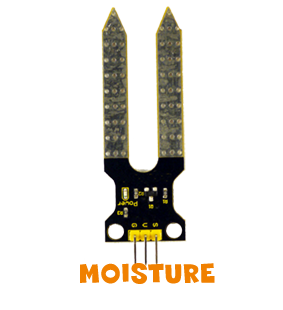
The Moisture sensor is a device designed to measure the water content in the soil, helping to improve agriculture and water management, optimizing irrigation, conserving water resources, and enhancing plant health.
The moisture sensor output value is an analog signal, making necessary the utilization of the Analog API for programming, as an analog input device.
Flame sensor
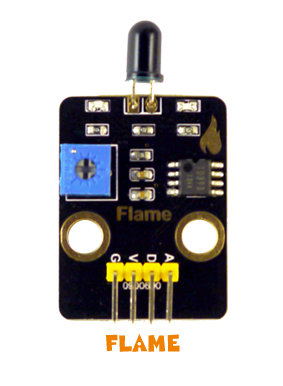
A flame sensor is a safety device that detects the presence of flames, commonly used in gas appliances and industrial systems. It monitors the flame’s existence, ensuring safe operation by initiating shutdown procedures without flames. This critical component contributes to preventing potential hazards and safeguarding equipment and environments.
The flame sensor delivers either a digital or analog signal. Opting for the digital output shows the presence or absence of a fire flame. Therefore, usually, we employ the Digital API for programming, treating it as a digital input device.
PIR Motion sensor
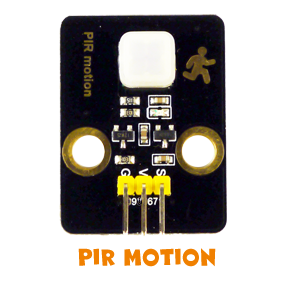
A Passive Infrared (PIR) motion sensor detects changes in infrared radiation emitted by objects in its field of view. Widely used in security systems and lighting control, it triggers responses like turning on lights when detecting motion. PIR sensors enhance energy efficiency and security by responding to human or animal movement.
The PIR sensor output value is a digital signal, making necessary the utilization of the Digital API for programming, as a digital input device.
Temperature and Humidity sensor
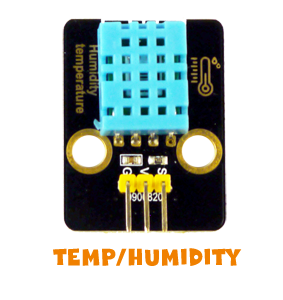
A Temperature and Humidity sensor measures ambient temperature and moisture levels in the air. Commonly employed in climate control systems, weather monitoring, and indoor environments, these sensors enable precise adjustments for comfort and safety. They play a key role in optimizing conditions for various applications, from agriculture to electronics.
DHT sensors communicate with the BrainPad very simply through one of its digital inputs and using TEMP & HUMIDITY API for programming.
Light Sensor
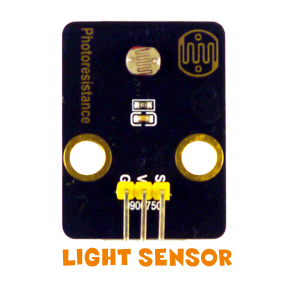
A light sensor, or photoresistor, detects and measures the intensity of ambient light. It functions by changing its resistance in response to light levels. Commonly used in electronic devices and automation systems, light sensors enable automatic adjustments in lighting conditions, contributing to energy efficiency and enhanced user experience in various applications.
The light sensor delivers either a digital or analog signal. Usually, we employ the Analog API for programming, treating it as an analog input device.
Speaker
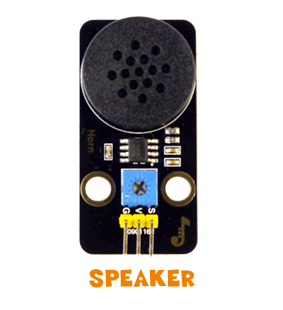
A speaker module with circuits is a compact audio device integrating a speaker and associated electronic circuits for sound reproduction. These circuits amplify and modulate electrical signals to drive the speaker, producing clear and amplified audio output. Commonly used in various electronic devices, it enhances audio playback quality.
We Use the Beep API for programming the Speaker module, treating it as an output device.
Fan Motor
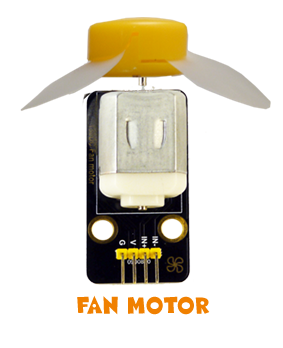
DC motors are electrical devices that convert direct current (DC) electrical energy into mechanical motion. Consisting of a rotor and stator, they operate on the principle of electromagnetic induction, producing rotational movement. DC motors find applications in a wide range of devices, from robotics to household appliances.
Controlling the DC motor is flexible, accommodating both digital and analog signals. Typically, we opt for the Analog API in programming, treating it as an analog output device.
Servo Motor
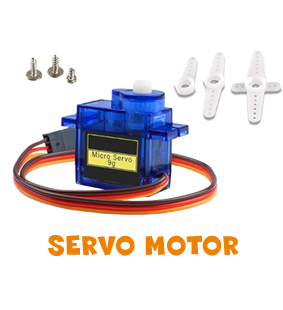
A servo motor is a rotary actuator that provides precise control of angular position. It consists of a motor, feedback sensor, and control circuit. Commonly used in robotics and automation, servo motors offer accurate and controlled movements, making them ideal for applications requiring precision.
Controlling the servo motor requires a specialized approach, and for programming, we choose the Servo API.
What’s Next?
Combine all these sensors and modules to make a full demo for your brand-new smart home prototype.
BrainStorm
Sensors convert things in our physical world to a number that the computer can see and process. Output Modules take a number and convert it to something in our physical world. Do these modules create a portal between the physical world and the computer’s digital world? How do we know we are real and not just another computer program, and that everything we see is just a number?


